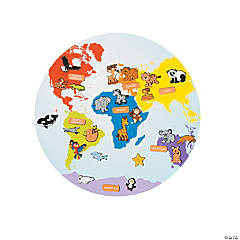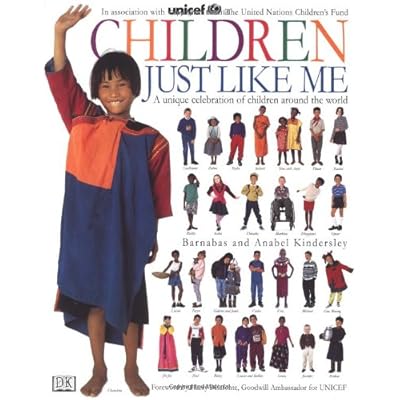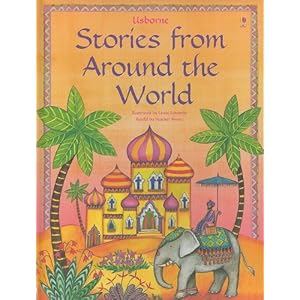When the children came in to class, I had them work on identifying the 7 continents and 5 oceans of the world. I will continue with this each week until they seem at ease with it. I found a small, blank map showing all the continents, then made name tags and had it all laminated so that they can use it as a matching puzzle.
They then choose one continent to visit and it was Europe. At the end of class, they chose for next week, and we'll continue that from hence forward. Next week we will study North America.
(Please see my Geography in a Box post for pictures and more details on the contents of each continent box:
http://www.blogger.com/blogger.g?blogID=1373838005234058414#editor/target=post;postID=2278402931910317202 )
I doled out various stickers for their passport books that related to the continent under study. When they bring these home at the end of class, I am hopeful they can use them for review and further study. I am including in these stickers some of the flags from various countries, animals found on that continent, children in native dress, or other stickers that show representative symbols of a particular country. They are also completing a small sticker project where they affix stickers of various animals to each continent on a globe map, and we're talking a little about the native flora and fauna.

(This is from Oriental Trading Company. It has some mistakes on it, so is not perfect, but I can work with it....)
They each brought home a small flag key chain from a different European country. I am hopeful they will get interested in learning about the flags of different countries. I believe there may be at least one free App. out there on flags of the world.... I have some things for them to bring home as "souvenirs" each week.
(I think I also got these at Oriental Trading, but they must be out right now as I no longer find them listed....)
Each week, they will complete a little written map work that is general in nature, at the beginning of class, before we embark on our trip to our continent of the week. This will vary, but will include work with looking at the different hemispheres (which we did this week), longitude and latitude, etc.
I'm taking all my map work from copies of old workbooks that I've used over and over again through the years. I think most of them come from old Weekly Reader series. (Map Skills for Today is the title of their books now, but I'm not sure it was the same back when I was collecting these.)
(I also found a terrific coloring book with informative pages about various countries from Dover and will be using some of those with them:)
As we get into talking about our continent under study for the week, they will complete some type of mapping exercise related to that, generally. On at least some weeks, I may send home additional map work related to that continent. These, too, mostly come from old Weekly Reader series workbooks.
Our box for Europe this week included selections of Celtic music, which we listened to in the background as they were completing other work. I have geographic flashcards of various landmarks and animals in each box, as well as some 3-D models. We discussed what city and/or country/region these are found in and found those on the map. I showed them a three dimensional representation of the landmark later, or a different view on another flashcard, then asked them again about it. We discussed the significance of these landmarks a little.
(Target generally has educational flashcards in their dollar bins at the beginning of any new school year....)
I had coins from various countries in Europe that I showed them and we talked a little about those and the Euro, of which I also had samples.
I will generally have some dolls or pictures of people in native dress for various countries. This week we looked at a Spanish lady all in lace and I talked about Flamenco dancers, hand-made Spanish lace, etc. We looked at a pair of children from Holland and talked a little about wooden shoes. I showed them a picture of traditionally dressed members of a Greek guard unit, as well.
I read to them, from DK's Children Just Like Me, about a little girl living in southern France (Provence), and a little boy from the far north of Scotland. They put together a couple of simple puzzles that I got in Scotland long years ago: a long-haired cow and a badger, and we talked about those. We also talked about the fact that moose range over northern Europe as well as North America.

I read them a couple of stories from Usborne's Stories from Around the World, and I'll be using books like these each week to cover some traditional folklore. This week, I read "How the Turtle Got Its Shell," a Greek myth that features Zeus, but is one that none of them had ever heard before. I also read "Puss in Boots," from France, because they said they loved it, but will generally try to read more non-standard things that I think they have not heard before and from countries not generally featured as much on the world stage....

I must say, we really didn't touch on Eastern European culture at all, so there will certainly be huge gaps in this due to time constraints! (I tried to include some of that in reading suggestions....)
As we talk about the different things in class, I will be working to try to get them identifying the areas on the map so that they will get more comfortable with where to find countries in relation to each other. I didn't manage to do a very good job of that this week, because they were so excited by just looking at the "stuff," but I think that as we go along and they get more used to it, we can do more map work along with the cultural. We did manage to talk quite a bit about Iceland, the United Kingdom, and Ireland, but insofar as pointing out other countries, we didn't do so well. We did look at the Mediterranean region and the Scandinavian region of Norway, Sweden, Denmark, and we did talk about and look at how only a very small part of Russia (but it's the part with the capital and important cities) is considered to be in Europe, and I marked the Ural Mountains for them as the dividing line between Europe and Asia. But I think we can do better....
Each week's class will have this same general flow, but will vary somewhat because I have slightly different materials collected from each continent.
Here is the reading list of books available in our library system that I sent to them before class began regarding general geography:
We have always loved Bobbie Kalman books and she has a series at our library called Explore Africa, Explore Asia, Explore etc..... I would recommend those for general reading on each continent. Once we get into our studies, I will make more specific recommendations about each area of the world as we study it.
Where on Earth: A Geograpfunny Guide to the Globe, Paul Rosenthal
For general world folklore, you might start with:
Noodlehead Stories from Around the World, Jagendorf
Favorite Fairy Tales Told Around the World, Virginia Haviland (a favored author of ours)
Wonder Tales from Around the World, Heather Forest
Cat Stories from Around the World, Jane Yolen (another favored author)
Can You Guess my Name? Traditional Tales Around the World, Judy Sierra (different versions of the traditional Cinderella story, Red Riding Hood story, etc.)
For general map reading purposes, they might check out:
Map Math: Learning About Latitude and Longitude Using Coordinate Systems, Orli Zuravicky
And if they want to read more about longitude:
The Man Who Made Time Travel, Kathryn Lasky (another great author)
For more on maps:
Maps and Mapping, Jinny Johnson (Kingfisher)
Maps and Globes, Jack Knowlton (a Reading Rainbow book)
Maps and Mapping, Deborah Chencellor (another Kingfisher book)
Mapping the World, Sylvia Johnson
Mapping Earth (Discovery Channel) - covers more modern mapping techniques
And here is the list I sent them covering Europe and North America:
European countries and their folklore:
Favorite Fairy Tales Told in France, Virginia Haviland
She also wrote Favorite Fairy Tales Told in Norway; Sweden; Spain; Ireland; Greece; Scotland; Italy; England; and Czechoslovakia, so take your pick!
The Names Upon the Harp: Irish Myth and Legend, Marie Heaney
Favorite Norse Myths, Marie Pope Osborne (nothing like the lame Tree House books) if you'd like to look at the northern lands
D'Aulaire's Book of Norse Mythology
D'Aulaire's Book of Trolls
Look What Came from the Netherlands, Kevin Davis
Castles in Spain: from The Alhambra, Washington Irving (but parents should pre-read to make certain you approve)
The Castle of the Cats, Eric Kimmel (Latvian folk tale)
Little Dog Lost, Monica Carnesi (true story set on the Baltic Sea)
The Jar of Fools, Eric Kimmel (from Eastern European Jewish tradition)
The Singing Tree, Kate Seredy (Hungarian) ...and, if you want a thoroughly boybarian, politically incorrect book by her set on the great European steppes, you might also try The White Stag....
North America:
Caribbean Pirates: A Treasure Chest of Fact, Fiction, and Folklore, George Beahm
The House in the Sky: A Bahamian Folk Tale, Robert San Souci ... and, if you like his style....
Twins and the Bird of Darkness: A Hero Tale from the Caribbean, Robert San Souci
The Faithful Friend, Robert San Souci (French West Indies)
Rain Player, Davis Wisniewski (Central Americas)
Quetzal: Sacred Bird of the Cloud Forest, Dorothy Patent
Journey of the Nightly Jaguar, Burton Albert
Hands of the Maya, Rachel Crandell
People of Corn: A Mayan Story, Mary-Joan Gerson
Flute's Journey: The Life of a Wood Thrush, Lynne Cherry (Costa Rica)
Costa Rica, Kathleen Deady
Rain Forests and Reefs: A Kid's-eye View of the Tropics, Caitlin Maynard (Belize)
Locks, Crocs, and Skeeters: The Story of the Panama Canal, Nancy Parker
The Panama Canal, Elizabeth Mann
Greenland Mummies, Janet Buell
Canada, Kay Olson
Crazy About Canada! Vivien Bowers
Seven Natural Wonders of the United States and Canada, Cheryl DeFries
The Eastern Forest, Eileen Fielding
The Migration of a Butterfly, Tanya Kant
A Pioneer Sampler, Barbara Greenwood
Prairies, Dorothy Patent
Hudson, Janice Weaver
Stories from Where We Live: The Great North American Prairie, Sara St. Antoine
Despite All Obstacles: La Salle and the Conquest of the Mississippi, Joan Goodman
The Broken Blade, William Durbin
I hope that someone else will find this information helpful for their geography studies,
Regena
No comments:
Post a Comment